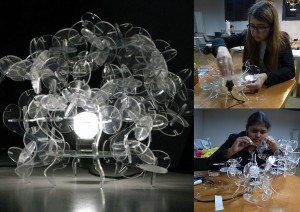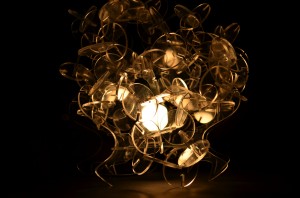The milling exercise was developed to make us familiar with the milling machine and explore the myriad ways of using a multi layered and coloured valcromat panel (our assigned material for milling).Developed on the concept of “Abstract depicting of the properties of a silk cloth” ; 2 tools, a 26 mm flat edge tool and later a 12mm tool was used for parallel finishing to achieve the desired effect.
Time taken : 1 hour and 10 min.



















